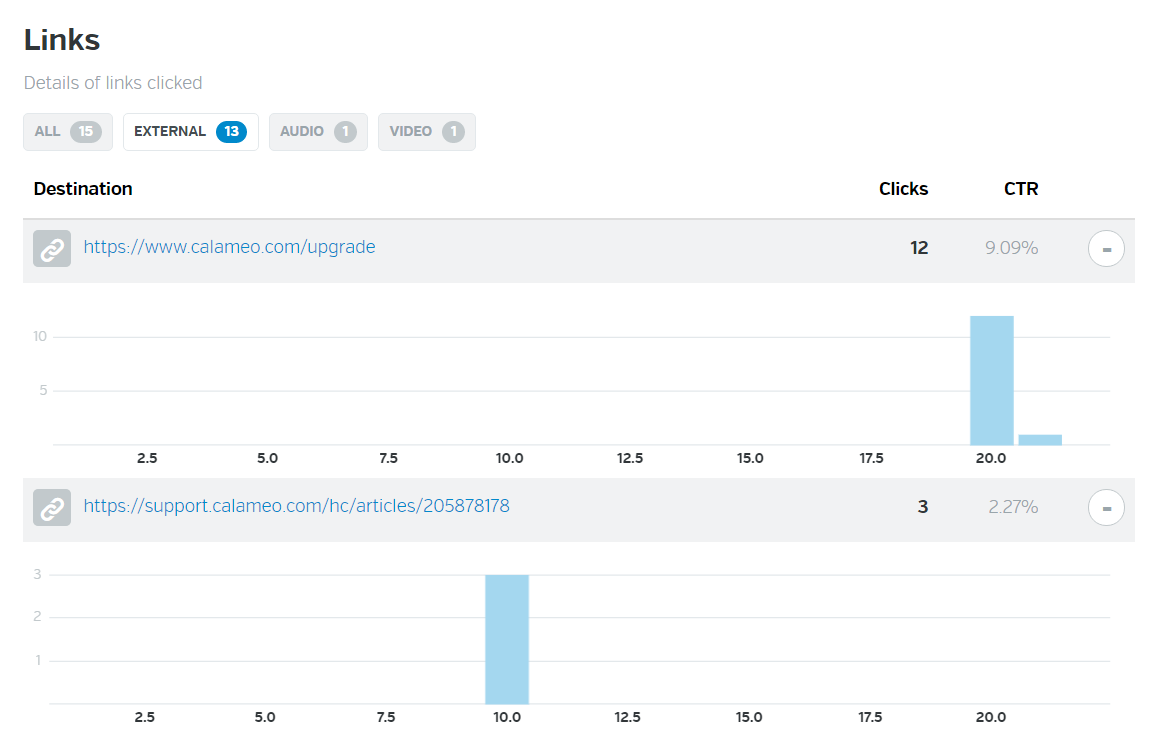When it comes to the statistics you need most for your digital publications, views are probably the first thing that springs to mind. You want to know how often your publications are being read online in order to measure their success with your audience. But the advanced statistics offered by Calaméo let you access data to dig in much deeper and better understand the impact of your digital publications.
In this post, we’ll highlight three ways to make the most out of data for your online publications.

 Focus on the fundamentals
Focus on the fundamentals
Views are undeniably a key metric for anyone publishing digitally. It makes sense to check in on your publications and see how many times they have been displayed.
The more context you have for this information, however, the more valuable it will be to you. A longer data history means that you can distinguish a short-term decline in readership for one of your publications from its overall long-term growth, or even model month-to-month views. In the case of data for your digital publications, more is definitely more.
For more statistics, upgrade today: PREMIUM subscribers have access to six months of stats and PLATINUM subscribers enjoy an unlimited data history.
 Expand your vision
Expand your vision
Views may be the basics, but Calaméo’s statistics offer you a wealth of other information. Looking at data that you may not be taking into account yet can refresh your approach to analytics and reveal fresh insights into your readership.
Stats like the average amount of time that readers spend on each page of your publication, or the time of day that your publication is most read may require a bit of interpretation, but they can help you understand your readers’ interaction with your documents.


A relatively even average reading time from page to page could indicate that readers tend to browse your publication. A clear spike in reading time on a particular page, however, suggests that readers are looking for specific information. Similarly, a noticeable peak in views at a certain time of day might correlate to an event mentioned in your publication as readers seek out the details. Add in the quantity, date and time of reader downloads and you begin to have a clearer picture of how your audience makes use of your digital publications.
 Take action
Take action
So far we’ve talked about tips for looking at your Calaméo statistics. To take full advantage of your readership data, you can use it to try out changes in your own publications. Knowing what works will let you build on successful features and experiment with areas that you wish to improve.
This applies not only to your content but also to an element of your publication such links. Our PLATINUM plan provides you with a detailed breakdown of clicks for your publications. You can view clicks on external links, audio and video elements in your documents, as well as the CTR (Click-Through Rate) automatically calculated for each.


We’ve already discussed how these statistics can be put to good use in your sales and marketing strategies. The data can also help you to maximize the performance of your external links. By testing different types of placement with our Editor, for example, you can determine how and where to position links most efficiently to engage your readers.
💡 Want even more detailed statistics? PLATINUM subscribers can connect their Calaméo accounts to Google Analytics.
We hope that this post has inspired you to take a new look at how you use Calaméo’s readership statistics. Have any questions? Check out our Help Center or write us anytime at contact@calameo.com.







